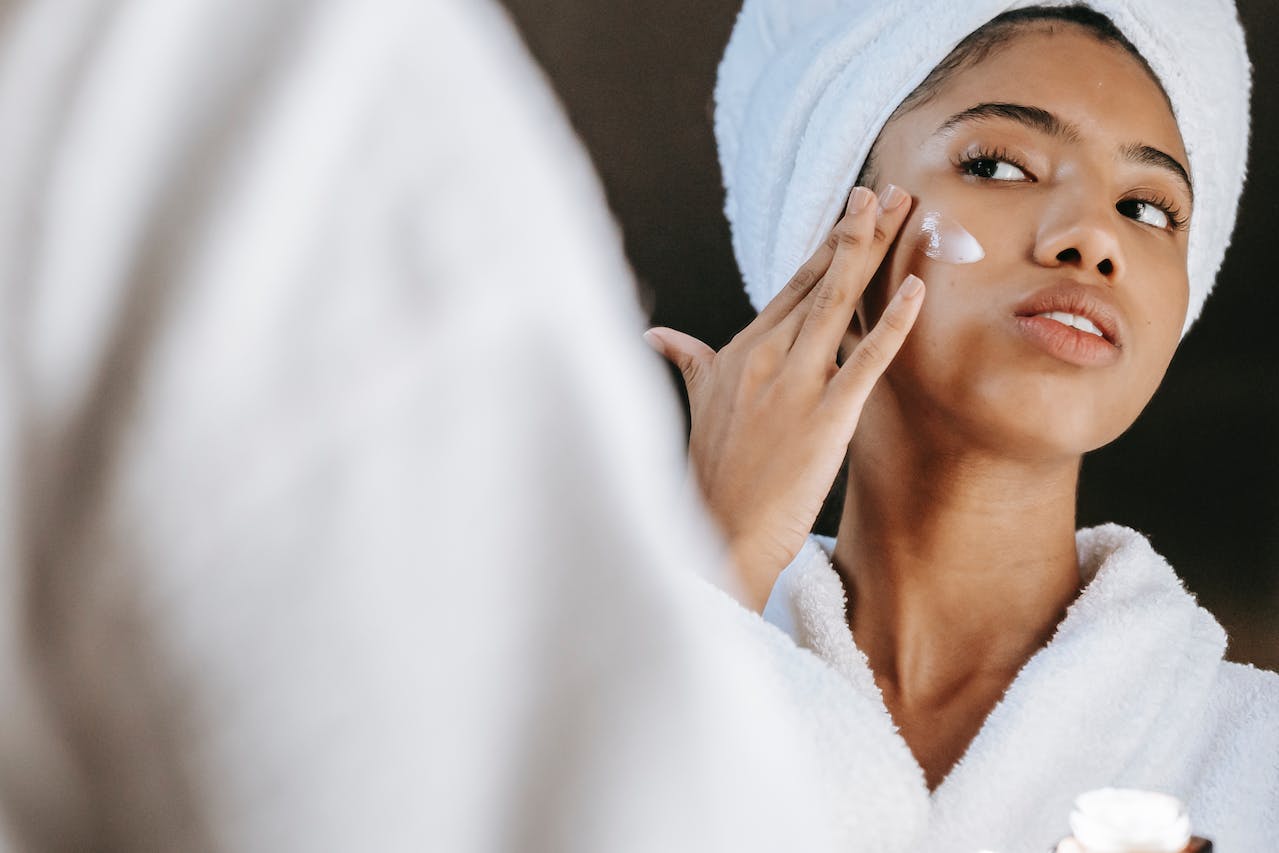Facial peels have become increasingly popular in the world of skincare, promising to rejuvenate and refresh the skin by removing dead cells and promoting a radiant complexion. While facial peels can indeed offer numerous benefits, it’s crucial to approach them with care and knowledge. To ensure a successful and safe experience, here are the do’s and don’ts of facial peels – essential tips that will help you achieve the desired results without compromising the health of your skin.
The Do’s
1. Consult With A Professional:
Prior to initiating a facial peel regimen, seeking guidance from a skincare professional or dermatologist is crucial. By consulting with an expert, you enable a comprehensive assessment of your skin type and concerns. This professional insight facilitates the identification of the most appropriate peel tailored to your specific needs. Their expertise minimizes the potential for adverse reactions, ensuring a personalized and safe approach to rejuvenating your skin. This proactive step not only enhances the effectiveness of the peel but also promotes overall skin health. Trusting in professional advice establishes a solid foundation for a successful and satisfying skincare journey.
2. Understand Your Skin Type:
Recognizing your skin type is essential when opting for facial peels, as diverse skin types respond uniquely. Whether your skin tends to be oily, dry, sensitive, or a combination, pinpointing your specific type is pivotal in choosing the suitable peel. Seeking advice from a skincare expert through a consultation can provide valuable insights into your skin’s characteristics, ensuring you select the most fitting peel formulation for optimal results and minimal irritation.
3. Start With Mild Peels:
For those venturing into facial peels, it’s prudent to initiate with mild options. Opting for gentle formulations like glycolic acid and lactic acid peels is ideal for beginners, as they provide effective exfoliation without overwhelming the skin. These compounds assist in removing dead skin cells, promoting a smoother complexion. It’s crucial to proceed gradually, allowing your skin to adapt and build tolerance. As confidence grows and your skin becomes more accustomed, you can explore more potent peels. However, it’s imperative to do so under professional supervision to ensure optimal results and mitigate potential risks associated with stronger chemical formulations.
4. Follow Pre-Peel Instructions:
Prior to undergoing a facial peel, it is crucial to meticulously follow the pre-peel instructions provided. These guidelines are designed to prepare your skin optimally for the procedure. Common directives may involve abstaining from specific skincare products, steering clear of prolonged sun exposure, or refraining from undergoing other treatments in the days leading up to the peel. Complying with these pre-peel instructions not only ensures that your skin is adequately primed but also plays a pivotal role in maximizing the efficacy of the peel itself. Additionally, strict adherence to these guidelines helps minimize the likelihood of encountering complications during or after the peel, promoting a safer and more successful skincare experience.
5. Use Sunscreen Daily:
Protecting your skin post-facial peel is crucial, given the increased susceptibility to UV damage. Make sunscreen an integral part of your daily skincare regimen, opting for a broad-spectrum formula with a minimum SPF 30. Consistency is key, applying it diligently even on overcast days. This proactive approach not only shields against potential pigmentation issues but also aids in the healing process, ensuring the longevity of the positive effects from the facial peel.
6. Hydrate Your Skin:
Facial peels can temporarily strip the skin of moisture. Maintain skin hydration by using a gentle, hydrating moisturizer. Look for products containing ingredients like hyaluronic acid or ceramides to replenish moisture and promote skin barrier health.
7. Monitor Your Skin’s Reaction:
Pay close attention to how your skin reacts after the peel. Some redness and mild irritation are normal, but excessive inflammation or prolonged discomfort may indicate a problem. If you experience any concerning reactions, contact your skincare professional immediately.
8. Follow Post-Peel Care:
Post-peel care is as crucial as pre-peel preparation. Stick to the recommended post-peel skincare routine provided by your skincare professional. This may include specific cleansers, serums, and moisturizers designed to support the healing process and maintain the results of the peel.
9. Consider Professional Application:
While at-home peel kits are available, considering a professional application, especially for stronger peels, can provide a safer and more effective experience. Professionals have the expertise to apply peels evenly and monitor your skin’s reaction during the process.
10. Be Patient:
Results from facial peels take time to manifest. Patience is key. Avoid overusing peels, thinking that more frequent applications will yield faster results. Give your skin the necessary time to heal and regenerate between peel sessions.
The Don’ts
1. Don’t Overdo It:
It is crucial to exercise caution in skincare routines and avoid overdoing exfoliation. Excessive exfoliation may cause irritation, redness, and compromise the skin’s natural barrier, leaving it vulnerable to environmental stressors. To maintain skin health, adhere to the recommended frequency and concentration suggested by your skincare professional. Resist the temptation to use peels more often or at higher concentrations than advised, as this can lead to adverse effects, undermining the intended benefits. A balanced approach to exfoliation ensures optimal results without compromising the skin’s integrity, promoting a radiant and healthy complexion.
2. Avoid DIY Peels Without Guidance:
It is crucial to exercise caution when considering at-home peel kits and refrain from attempting DIY peels without appropriate guidance. While these kits are readily available, seeking professional consultation is imperative to ascertain the peel’s compatibility with your specific skin type and concerns. This personalized advice not only enhances the effectiveness of the treatment but also minimizes the potential risks of complications. Entrusting your skincare to experts ensures a safer and more tailored approach, addressing individual needs and promoting optimal results. Thus, prioritizing professional guidance safeguards your skin health and contributes to a more successful and satisfying skincare routine.
3. Don’t Sunbathe After A Peel:
Following a facial peel, it’s crucial to steer clear of sunbathing to prevent potential complications. Exposure to sunlight shortly after a peel can result in hyperpigmentation and harm the recently revealed skin layers. It’s advisable to refrain from prolonged sun exposure for a minimum of one week post-peel. In situations where sun exposure is unavoidable, taking protective measures becomes paramount. Wearing a hat and applying sunscreen are essential steps to shield the delicate, newly treated skin from the harmful effects of UV rays. These precautions contribute significantly to the overall success and safety of the post-peel recovery process.
4. Skip Harsh Skincare Products:
During the days preceding and succeeding a chemical peel, it is crucial to avoid the use of harsh skincare products. Specifically, products containing retinoids or benzoyl peroxide should be omitted from your skincare routine during this period. These substances have the potential to intensify skin irritation and may impede the natural healing process initiated by the peel. By steering clear of these aggressive formulations, you create a conducive environment for your skin to recover, minimizing the risk of inflammation and ensuring optimal results from the peel. Opting for gentler alternatives can promote a smoother and more comfortable healing experience for your skin.
5. Don’t Pick At Peeling Skin:
After undergoing a facial peel, it’s typical for the skin to undergo a peeling phase. Despite the temptation to pick or manually remove the peeling skin, it is crucial to exercise restraint. Allow the peeling to unfold naturally and assist the process with a mild cleanser and moisturizer. Picking at the skin can result in adverse consequences such as scarring and the potential for infection. Embracing patience during this phase not only ensures a smoother recovery but also promotes the skin’s natural rejuvenation process. Employing gentle skin care practices will contribute to a healthier and more vibrant complexion in the long run.
6. Avoid Hot Showers And Saunas:
Steering clear of hot showers and saunas is imperative following a chemical peel, as these activities can exacerbate skin sensitivity. It’s crucial to avoid hot water exposure, including steam rooms, in the days immediately after the peel. Choosing a more temperate approach, such as cleansing your face with lukewarm water, becomes essential. This precautionary step aims to reduce the potential for additional irritation, promoting a more seamless healing process for your skin. Adhering to this advice not only contributes to the effectiveness of the peel treatment but also plays a pivotal role in preserving the optimal condition of your newly rejuvenated skin.
7. Don’t Combine Peels With Harsh Treatments:
When it comes to skincare, it’s essential to exercise caution regarding the combination of facial peels with other intensive treatments like laser therapy or microdermabrasion. Without professional guidance, the simultaneous application of these harsh procedures can have detrimental effects on your skin. The cumulative impact of such aggressive treatments may overwhelm the skin’s natural balance, potentially resulting in adverse reactions such as redness, sensitivity, or even damage. To ensure a safe and effective skincare regimen, seek the advice of skincare professionals who can provide personalized recommendations tailored to your skin’s unique needs, preventing any potential complications from the combination of treatments.
8. Don’t Neglect Follow-Up Appointments:
If you’ve undergone a series of peels as part of a treatment plan, don’t skip follow-up appointments with your skincare professional. These appointments allow them to assess your progress, adjust the treatment plan if necessary, and address any concerns you may have.
9. Steer Clear Of Strong Peels Initially:
Resist the temptation to jump into strong peels without gradually building tolerance. Strong peels, such as those containing trichloroacetic acid (TCA) or phenol, should be approached cautiously and are typically administered by professionals.
10. Don’t Disregard Allergic Reactions:
Allergic reactions to peel ingredients are rare but possible. If you experience severe itching, swelling, or difficulty breathing after a peel, seek medical attention immediately. Allergic reactions require prompt intervention.
In conclusion, facial peels can be powerful tools in achieving smoother, more radiant skin. However, success lies in understanding and adhering to the do’s and don’ts associated with these treatments. With proper guidance, patience, and attention to skincare routines, facial peels can become a valuable addition to your skincare regimen, helping you unveil a healthier and more vibrant complexion.

Are You Looking For A Reliable Facial Peel Clinic?
Discover the excellence of facial peel treatments at Simply Skin Esthetics, nestled in the vibrant downtown of Walnut Creek, California. Our outstanding skin care services have built a dedicated clientele, and here’s the reason: we focus on providing safe and effective skincare solutions that last. Our dedication is reflected in the number of clients who repeatedly choose us for their skincare needs. Explore our range of treatments including HydraFacial, Ultrasound Facial, Signature Facial, Men’s Facial, Express Facial, and our specialized Facial Peels! Curious to learn more or eager to schedule your first session? Contact us today to book your appointment!


